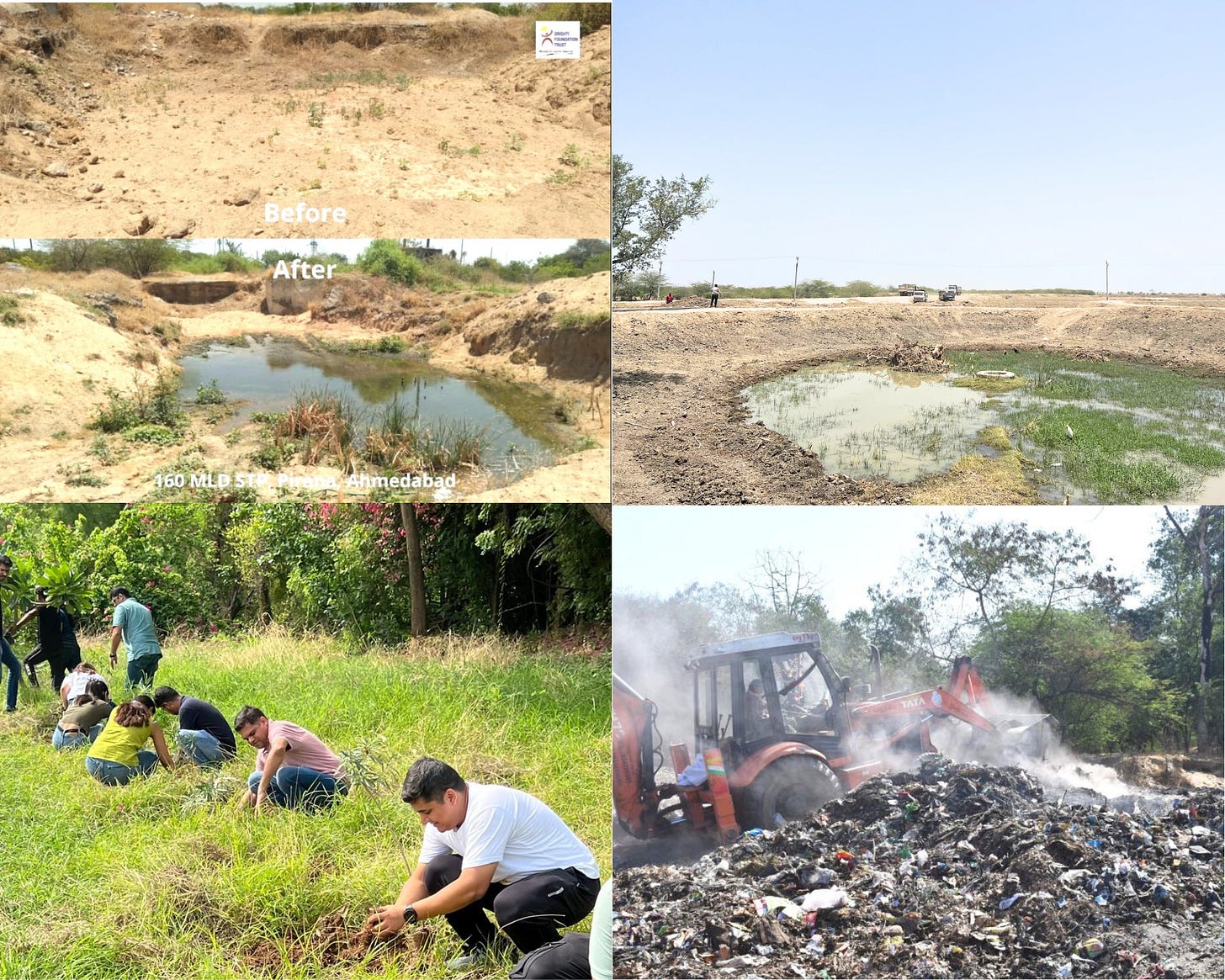From Rivers to Trees: Rethinking Biodiversity in India’s Growing Cities
Rapid urbanisation is eroding vital ecosystems,with consequences for health and resilience. Reconnecting policy and community efforts is key to safeguarding biodiversity and shaping sustainable cities
View as PDF
SDG 15: Life on Land
Institutions: Ministry of Environment, Forest and Climate Change
In India’s fast-growing cities, biodiversity is quietly slipping away, with consequences that ripple through daily life. Urban expansion, pollution, and infrastructure projects have fragmented habitats, pushing native species to the brink. Studies show that many common urban birds and insects are disappearing, a trend that threatens the ecological services they provide, right from pollination to natural pest control.
This loss is not just environmental; it is deeply social and economic. The decline in biodiversity contributes to increased disease risks, reduced air and water quality, and diminished resilience to climate change. Cities like Ahmedabad and Delhi are already facing these challenges, where rapid growth has often outpaced planning for green spaces and natural habitats.
Dinesh Kumar Gautam, founder of Ahmedabad’s Drishti Foundation, has witnessed this loss firsthand and is working to restore the delicate balance between nature and urban living. For him, restoring biodiversity in cities by reconnecting people with nature through practical, community-led action remains the most important pathway to sustainability
Bridging Conservation and Urban Needs
Dinesh began with tree-planting drives but soon recognised a critical gap in urban environmental work: conservation and plantation are often treated as separate agendas.
“Conservation and plantation are often treated like two different things,” he says. “But if we do both right, we can support biodiversity and meet human needs at the same time.”
Many urban greening drives plant fast-growing, non-native species that look good on paper. These trees may grow quickly and provide shade but fail to sustain birds, insects, or maintain soil health. In contrast, native species form the backbone of local ecosystems.
“It is not just about numbers,” Dinesh explains. “The right trees are those that sustain birds, insects, and entire ecosystems.”
This mismatch has broader implications. Urban areas face higher incidences of mosquito-borne diseases such as dengue and chikungunya. In rural areas, frogs naturally help control mosquito populations by eating larvae. In cities, the disappearance of such natural predators – alongside green habitats – allows disease vectors to thrive unchecked.
Ahmedabad’s sparrows, once a common sight have almost vanished – casualties of rapid urbanisation that leaves them nowhere to nest or feed. Dinesh stresses this pattern is widespread.
“This isn’t just an Ahmedabad problem,” he says. “Look at Delhi – the Yamuna River is polluted while the Sabi river has gone underground. That makes survival a struggle for many native species.”
Community as a Catalyst for Change
In 2018, recognising the scale of Ahmedabad’s ecological challenges, Dinesh launched the Sabarmati River cleanup – a bid to reclaim green space and revive biodiversity. Unlike typical top-down government projects, this initiative centred on community participation. Working closely with local temple leaders, he mobilised residents to take ownership of the river’s health.
Over several months, his team removed hundreds of tonnes of waste and planted native trees. The impact was tangible: sparrows returned, and public awareness of biodiversity loss began to grow.
“When local communities see themselves as part of the solution,” Dinesh says, “conservation becomes a shared mission, not just an administrative task.”
Governance Gaps and Policy Challenges
Restoring biodiversity in cities is rarely straightforward. The Sabarmati cleanup revealed a tangled web of responsibilities. The irrigation department, municipal corporation, forest department, and riverfront authority each oversee different stretches of the river and its surroundings. The core problem was not technical capacity but coordination – and crucially, which department would claim credit if the project succeeded, or shoulder blame if it failed.
Similar weaknesses emerge in disaster preparedness. Although it is widely viewed as a government responsibility, even municipal corporations often lack training and resources for an effective response. To address this, Drishti launched a community radio channel focused on disaster resilience, empowering locals with practical information and a sense of ownership.
Funding Realities and Bureaucratic Hurdles
Financing grassroots conservation is complicated. Corporate Social Responsibility (CSR) funds hold promise, but access is uneven for grassroot organisations. During the COVID-19 pandemic, many companies redirected CSR budgets towards large government schemes or their own foundations, leaving smaller NGOs struggling to sustain field operations.
Regulatory demands add another layer of difficulty: complex audits, multiple certifications, and compliance checks consume scarce resources and deter smaller groups from scaling up their work. Inflexible reporting formats and slow approval cycles further stifle timely and innovative responses.
Towards a New Urban Biodiversity Policy
Dinesh argues urban planning and environmental policy must evolve to today’s realities.
“Biodiversity isn’t a luxury or a decorative concern, it is essential for healthy cities,” he says.
While government policies often acknowledge the value of NGOs and community participation, Dinesh points out that these commitments are rarely matched by adequate support or simplified procedures.
“We need policies that back local voices and flexible solutions, not choke them with paperwork,” he insists.
Integrating biodiversity into urban planning, from mandating native species in green spaces to fostering cross-departmental coordination, can deliver significant health, climate, and social benefits. Importantly, treating communities as active partners rather than passive beneficiaries makes conservation efforts both sustainable and inclusive.
For Dinesh, biodiversity is not an abstract or aesthetic concern; it is the foundation of healthy, sustainable urban life.
“Protecting biodiversity means protecting ourselves,” he says.
Bridging the gap between policy and community engagement is essential if India’s cities are to thrive alongside the natural world.
View as PDF
Dinesh Kumar Gautam is Founding Director of Drishti Foundation, based at Ahmedabad. All the details are based on his account and have been approved for publication. This piece was prepared with assistance from Ms Asmita Jain, a member of the editorial team at The Policy Edge.


